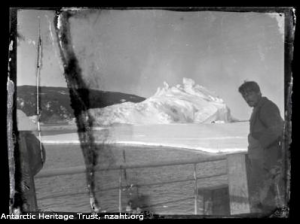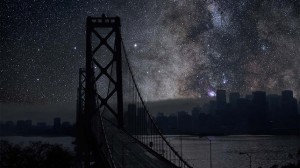 Almost a century ago, Ernest Shackleton‘s Antarctic Expedition (1914-1917) left some film negatives in Captain Robert Falcon Scott’s former hut (from his failed 1912 expedition to become the first to reach the South Pole). Amazingly, it’s taken until now for these negatives to be (re)discovered by New Zealand’s Antarctic Heritage Trust. It’s pretty cool that the negatives are in such relatively good condition, but it also makes you realize how fragile our current archiving of our lives is – we are totally dependent on relatively fragile digital media.
Almost a century ago, Ernest Shackleton‘s Antarctic Expedition (1914-1917) left some film negatives in Captain Robert Falcon Scott’s former hut (from his failed 1912 expedition to become the first to reach the South Pole). Amazingly, it’s taken until now for these negatives to be (re)discovered by New Zealand’s Antarctic Heritage Trust. It’s pretty cool that the negatives are in such relatively good condition, but it also makes you realize how fragile our current archiving of our lives is – we are totally dependent on relatively fragile digital media.
Drones in the US
The use of drone aircraft in the US is the target of new legislation in the House of Representatives, which basically seeks to prohibit citizens from flying any remotely operated aircraft that has a camera (sorry kids, no more strapping cameras to model rockets!). Or rather, they seek to make it a misdemeanor to use a UAV to photograph a person or their property without their explicit permission. This is a bit redundant, as there are already privacy laws that prohibit photography when a person has a reasonable expectation to privacy. Ignoring that for a minute, on the surface this may sound like a good law, but consider this. Government would still have the ability to use UAVs, police helicopters, and surveillance satellites to photograph you without a warrant, whenever they want. This just takes that ability away from citizens. When you look at what citizen photography has already done in exposing police brutality and corporate wrongs, I believe that citizen UAVs operating under existing privacy laws are not necessarily bad, perhaps even a very good thing in maintaining trust in government and business. It’s an interesting debate, I can see both sides of the issue…I think rather than an outright ban, we’d be better off with something less than that. Maybe restrict them from photographing residential property, but the rest is fair game? What do you think?
(via FastCompany)
What our cities would look like at night without light pollution
 Artist/photographer Thierry Cohen has created some really cool images which show what several major cities worldwide would look like if there was no artificial lights (nor moonlight) masking the starry skies. The result is really cool and can be viewed at his website. He did this by shooting images of the night sky in places with similar latitude but no city lights, then overlaid them onto darkened photos of the cities themselves. Very cool.
Artist/photographer Thierry Cohen has created some really cool images which show what several major cities worldwide would look like if there was no artificial lights (nor moonlight) masking the starry skies. The result is really cool and can be viewed at his website. He did this by shooting images of the night sky in places with similar latitude but no city lights, then overlaid them onto darkened photos of the cities themselves. Very cool.
Object Removal in Photographs?
So here’s the problem…you want to take a picture of a person in a public space, but all the strangers walking by keep cluttering up the image! The solution? Use a soon-to-be-released app from Scalado to just ‘exclude’ those random people from the picture. I’m not completely certain how the technology works, but believe it’s essentially taking multiple images of the same picture, so once it identifies an area that has changed (a person walking through the image), it has the data already for what should be behind that person. This video is a nice demonstration of how this technology could be used:
It’s easy to see how this can be useful for taking pictures, but think about taking this one step further. What if this technology were embedded in a realtime AR display? Imagine wearing AR glasses, and having a wearable computer essentially ‘filter out’ all the people from your field of view. Or, once you can do that, replacing them with abstracts. Maybe just floating blue misty shapes like ghosts, so you know there are people there but aren’t distracted by the details? At that point, the possibilities are endless and really just a matter of creative software implementation. Awesome.

